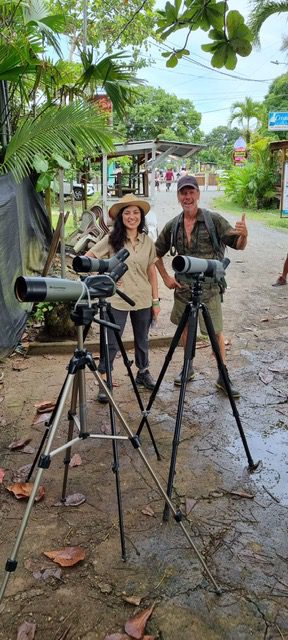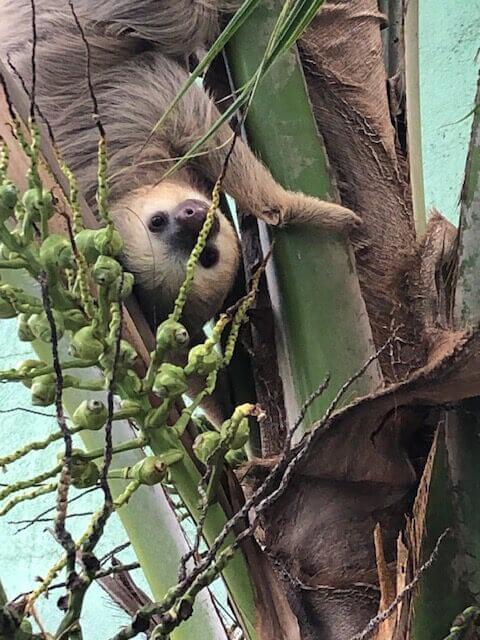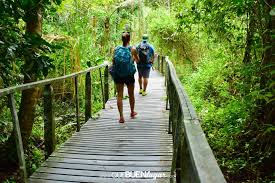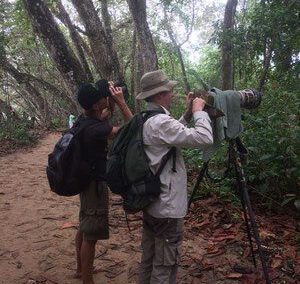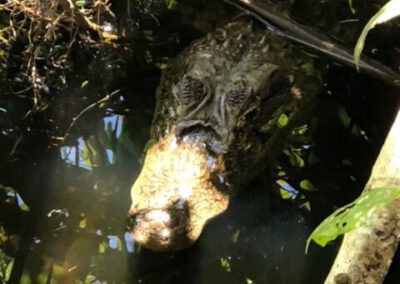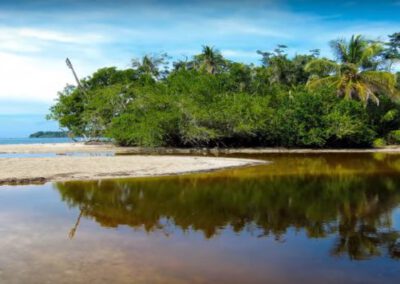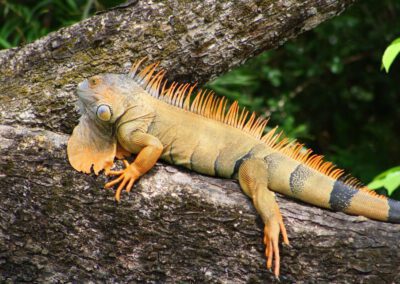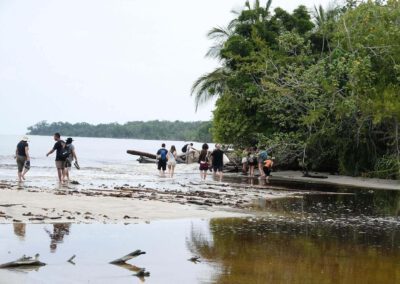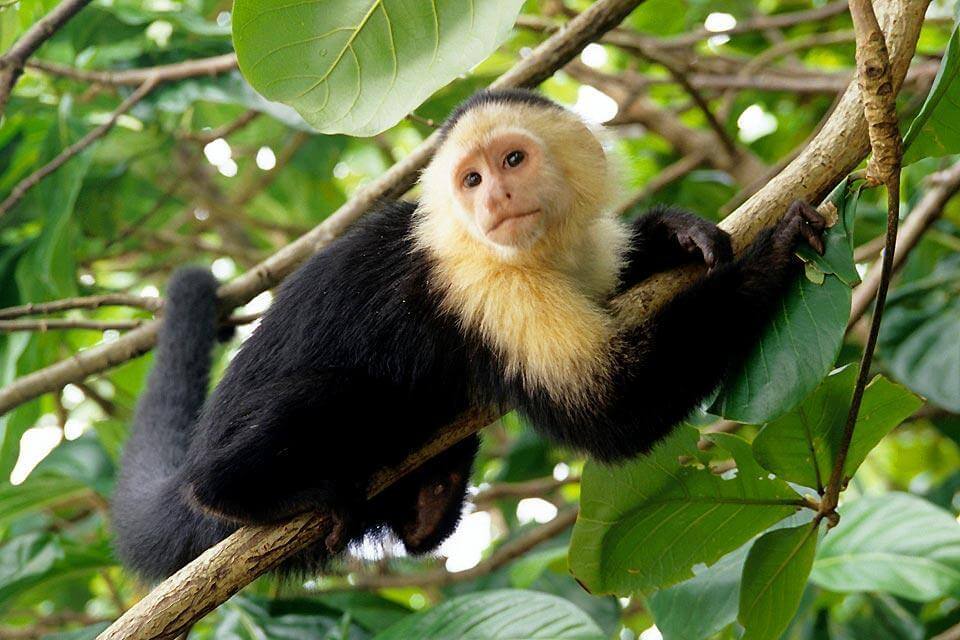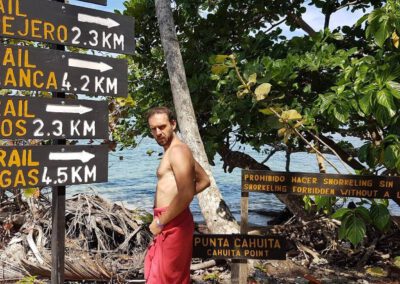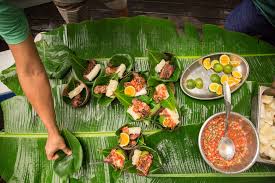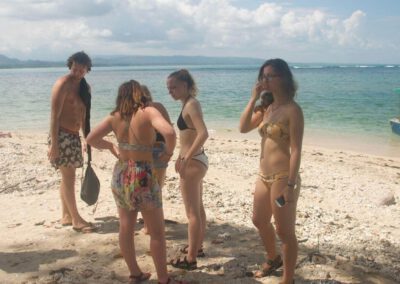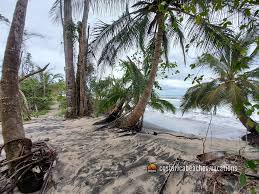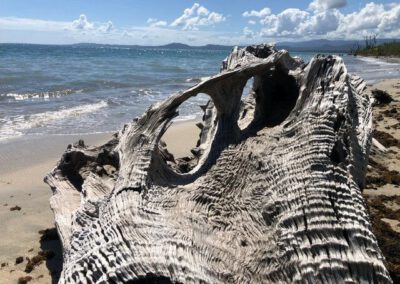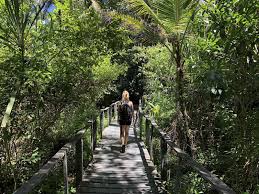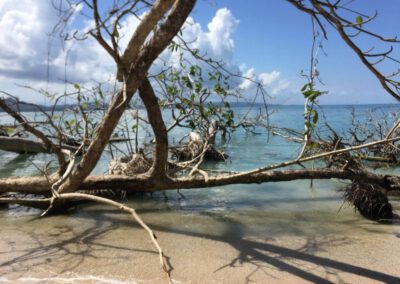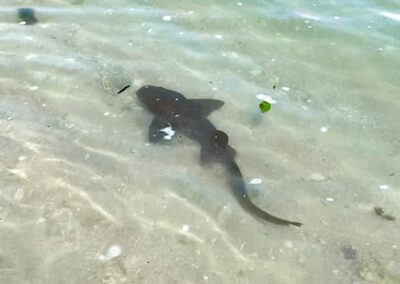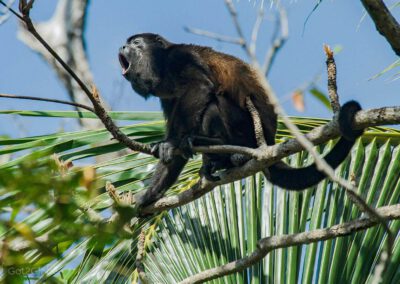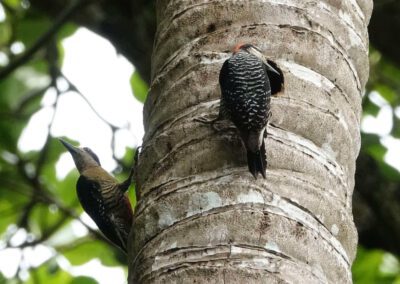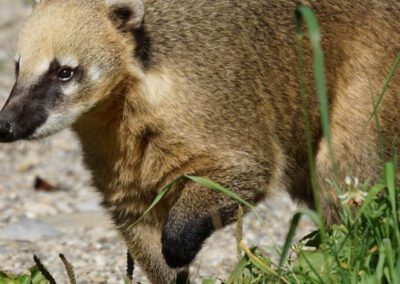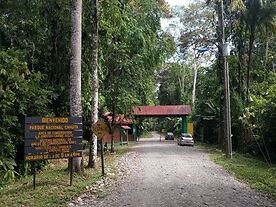Contents
Cahuita National Park | Full Day Hike | Discover the Lush Wildlife and Rainforest
A great full-day hike at the Cahuita National Park. Enjoy your hike tour and meet the Mammals of the Cahuita National Park.
You will meet many species, like monkeys, sloths, iguanas, lizards, snakes, and more. And do not forget the fantastic flora, fauna, and old giant trees.
Cahuita National Park | Full Day Hike from Cahuita to Vargas | What to expect?
A full day of Hiking, Starting Point at the entrance of Cahuita National Park, the way to the endpoint of the Park at Puerto Vargas.
It is a beautiful trip, and we take breaks at some key points to relax and perhaps take a fresh dive in the sea.
The distance between the two entrances of Cahuita National Park to Puerto Vargas is about 6 miles long and leads around Cahuita Point.
This hike will allow you to experience the broad spectrum of biodiversity the park offers fully. Big chance we run into different kinds of mammals, like monkeys, coatis, sloths, snakes, and other wildlife.
We might even (have) an encounter with the American crocodile, also inhabitants of the Cahuita National Park present, but that is upon luck, as they hardly show themselves.
Somewhere halfway, we can take (a) rest, eat local fresh fruits & chocolate, a local Costa Rican lunch, and have a break on the beach. And of course, you can take a swim.
The last part leads through an old rainforest with giant trees covered in Epiphytes while you walk over an elevated trail (blue morph butterflies fly by while you walk over a high path through a swampy forest). From the other end of the park, it is a short ride with the bus back to Cahuita.
Duration
Approximately: 5 hours.
What to bring with you?
Sunscreen, drinking water, easy shoes, a towel, and eventually, rain cover, swim clothes if you want to have a fresh dip in the sea. Making a valid weather forecast can sometimes be challenging. [It is not allowed to bring food in The Cahuita National Park].
Our Tour guides
Our guides are genuinely local and experienced tour professionals. They harbor a sincere and profound passion for nature and wildlife, deeply respect Costa Rican culture, are thoroughly prepared, and are licensed by the ICT (Costa Rican Tourism Institute).
Pricing
For pricing, see the shop product page and the “Additional Information” Tab; minimum group size [adults] = two persons. For youngster discounts, visit the product page!
What is Included
Fresh fruits [to be consumed after the hiking tour] and a proper local experienced tour guide.
Meeting Point and Directions
Entrance to the National Park of Cahuita.
About Cahuita National Park
The Cahuita National Park is located in the Southern part of the Caribbean Coast of Costa Rica and was founded in 1978. It is still the only national park in Costa Rica that depends exclusively on donations.
These are used to keep the park in the best possible conditions, free of pollution, and to ensure the safety of the wildlife and visitors.
Our tour guides offer a variety of adventurous, wildlife, hiking, and trekking tours.
The Coral Reef at The National Park of Cahuita is protected and can only be visited by the assistance of tour guides with a permit.
It is the largest fringing reef in the Caribbean in the country. This reef consists of three barriers, and it is a protected coral reef; the outer barrier stretches for 5 km from the Western side of Punta Cahuita to the Eastern side; it is separated from the coast between 100 m and 2 miles.
It is a nesting ground for sea turtles, but that is not all you will see if you go scuba-diving or snorkeling.
The Reef is filled with over 240 marine life, including tropical fish species, sea urchins, sea cucumbers, manta rays, and even three species of sharks that call the coralline reef home.
There are at least 35 species of coral, over 120 species of fish, and many mollusks and crustaceans.
Wildlife
The Cahuita National Park is home to numerous wildlife species. Among the more common mammals are armadillos, raccoons, sloths, howler monkeys, and capuchin monkeys.
There are many species of reptiles and amphibians, including blue jeans dart frogs and red-eyed-leaf frogs, green iguanas, whip-tailed lizards, green vine snakes, and boa constrictors. Perhaps the most notable reptile is the yellow eyelash pit viper, which has a brilliant golden-yellow color.
Many birds inhabit the park, including keel-billed and chestnut mandible toucans, fiery-billed aracaris, oropendolas, parakeets, parrots, herons, egrets, and more.
Nature, flora, and Fauna
The half-day tour from Puerto Vargas inherits a different flora and fauna than Cahuita. The swamp forest and ancient trees, as well as the quote of birds, make it worthwhile.
On poorly drained land in forested lowlands, where the ground is firmer than in Ravi swamps, one finds wooded swamps with buttressed Pteropus trees and various palms, all burdened with many lianas. Habitat of Green Ibis, Rufescent Tiger-Heron and Green-and-rufous Kingfisher.
Most of the ground on this evergreen swamp forest is underwater most of the year; decaying vegetation and poor drainage allow tannins to accumulate, producing the characteristic ‘Backwaters.’
Luckily, they constructed a long elevated footpath over the forest floor, a unique way to experience this Neo-tropical rainforest.
Protected Reef of the Cahuita National Park
The Marine life, sea life, or ocean life is the plants, animals, and other organisms that live in the salt water of the sea or ocean, or the brackish water of coastal estuaries.
At a fundamental level, marine life affects the nature of the planet. Marine organisms, primarily microorganisms, produce oxygen and sequester carbon.
Marine life, in part, shape and protect shorelines, and some marine organisms even help create new land (like coral-building reefs).
Most life forms evolved initially in marine habitats. By volume, oceans provide about 90% of the living space on the planet. The earliest vertebrates appeared as fish, which live exclusively in water.
Some of these evolved into amphibians, which spend portions of their lives in water and portions on land.
One group of amphibians evolved into reptiles and mammals, and a few subsets of each returned to the ocean as sea snakes, sea turtles, seals, manatees, and whales. Plant forms such as kelp and other algae grow in the water and are the basis for some underwater ecosystems.
Plankton establishes the general foundation of the ocean food chain, particularly phytoplankton, which are key primary producers.
Marine invertebrates exhibit many modifications to survive in poorly oxygenated waters, including breathing tubes, as in mollusk siphons. Fish have gills instead of lungs, although some fish species, such as lungfish, have both. Marine mammals (like dolphins, whales, otters, and seals) must surface periodically to breathe air.
The Reef of Cahuita National Park has over 500 fish species, including three types of sharks, which you might encounter while snorkeling, but a dozen of other fish species like dolphins, blue parrot fish, rock beauty, the French angelfish, and even the dangerous scorpion fish.
Cahuita National Park | Full-Day Hike and Swim
